[ad_1]
Part 2. See Part 1 here.
In Munich, I’ve met people from all around the world and with different connections to the field of jewelry. I asked them to talk about the main reason they came.
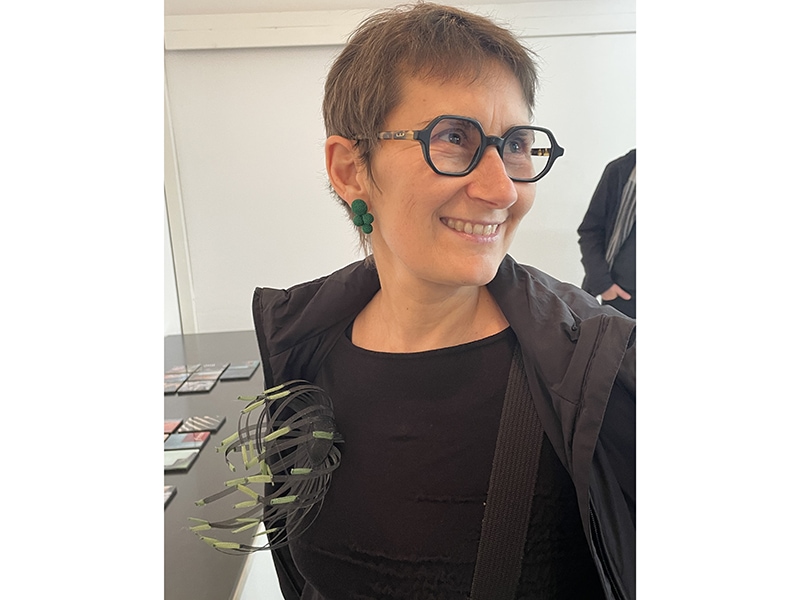
Emmanuelle Rohrlich: To discover artists and trends, and to add to her collection
Emmanuelle Rohrlich is a French jewelry artist who lives in Belgium. This is the first time she has come to Munich. “Already as a student at RHok Academie de Bruxelles, I was encouraged by my professors to visit this important event in contemporary jewelry,” she says. Her main goal in coming was to discover artists and trends, and find inspiration. “I was not disappointed,” she says. “I found it very interesting to discover such different artists, techniques, and worlds. It was very enriching and very inspiring to be able to interact with the artists, and it made me want to quickly return to my studio to work.” Rohrlich also wants to add to her personal collection. “I bought a few pieces that touched my heart,” she says. She hopes to one day return to Munich to show her own work.

Hitomi Kondo: To support her artists
While walking down a nondescript street, I spot a woman wearing a distinctive brooch, so I stop her to ask if she’s in town for jewelry week. She is. She owns Gallery C.A.J., in Kyoto, Japan. This is her second time attending Munich. This year, she came to support the artists in her gallery, some of whom are on show in the Kankan – Kirakira – Dokidoki exhibition in Die Neue Sammlung.
Liesbeth den Besten: It’s the best place to see a lot of work from everywhere
As I leave the Messe to take the U-Bahn back to the city center, I encounter Liesbeth den Besten and her husband, Jim Reekers. This is the 25th year that den Besten has attended Munich’s jewelry week. “I have seen the event grow from a well-organized program to an overloaded and rather hysterical whole,” she says. “I always miss a lot that I later deeply regret, even though I [realize] in advance that I cannot do everything I would like.” She came in part because she has some meetings and appointments; to pick up a previously commissioned mourning necklace by Lori Talcot—”When I saw an Instagram post by her of a black silver medallion-shaped pendant on a black cord with a black coral and seven knots, I asked her if she could make one for me with the letters IMO on it. It was lovely to meet her in person and to receive this beautiful necklace that means a lot to me, also because of the care and attention with which she made it”—and to give a short speech at Galerie Biro. “One of my best experiences was an interview with 82-year-old Hubertus von Skal, a vital man, eyewitness [to] and part of the new post-war German jewelry, who gave up his workshop last November and now enjoys drawing and writing poems.”
“By going to Munich,” she continues, “I hope to find inspiration, because it is the best way to see a lot of work from all corners of the world. I hope to see interesting exhibitions and work. I am interested in exhibition display and the installation of jewelry.” Being here also gives her a chance to catch up with people who have the same interests as she does and who she can’t often see because they live far away. Furthermore, it’s the perfect place to find new jewelry to add to her collection.
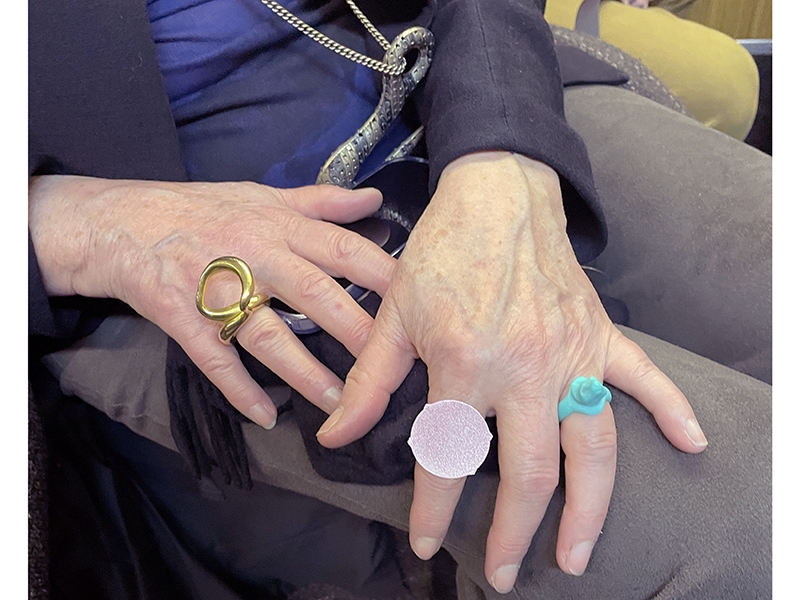
In the harsh light of the subway car, she shows off a number of the day’s purchases. Some she pulls out of bags, but she’s especially excited by a new ring she’s already wearing on her left hand, one made by Marta Boan, from Barcelona. Den Besten loves its clever construction from a single piece of stainless steel sheet. It “struck me in its simplicity. It’s a good design and carefully made: precise, and concise. The powder-coated top is refined. Sometimes a ring doesn’t need more than that.”
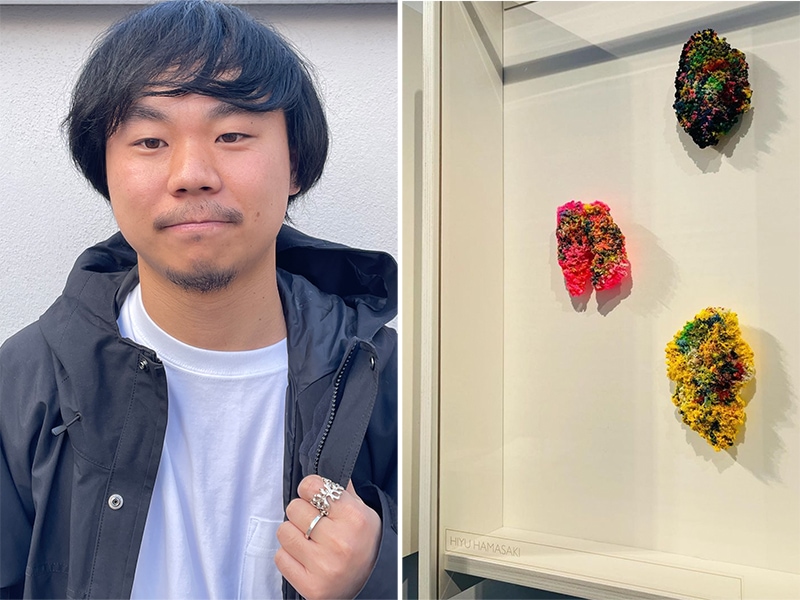
Hiyu Hamasaki: His work is on display here
I meet Hiyu Hamasaki outside David Blander Junkyard. He’s Japanese and has come to Munich because he is a finalist for the BKV Prize for Young Applied Arts, so his work is on display. This is his sixth time in attendance—he thinks. He’s not sure. His jewelry was all packed in his luggage, so he showed me some photos of it on Instagram.
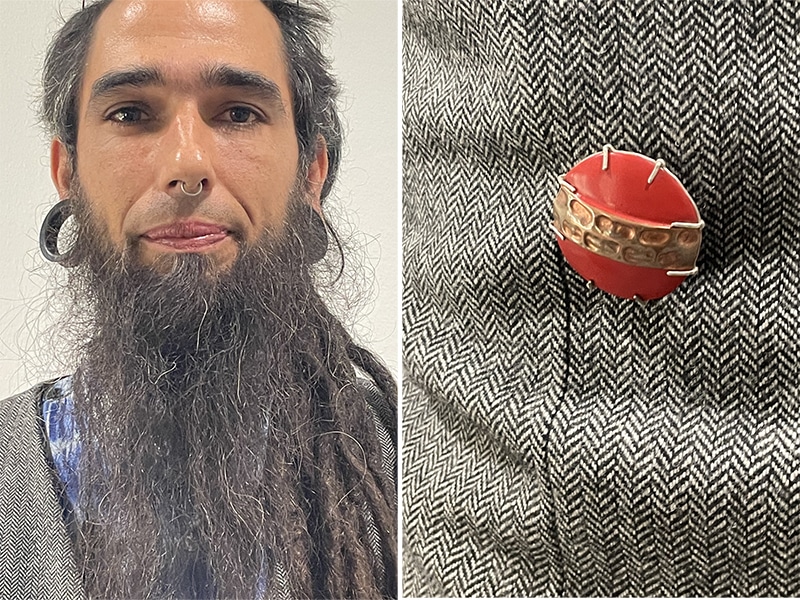
Noah Layr: For the connections
Noah Layr is a jeweler from Graz. This is the fourth time he has attended Munich. He comes to the event to connect with people, with work, and the interactions that Munich opens up.
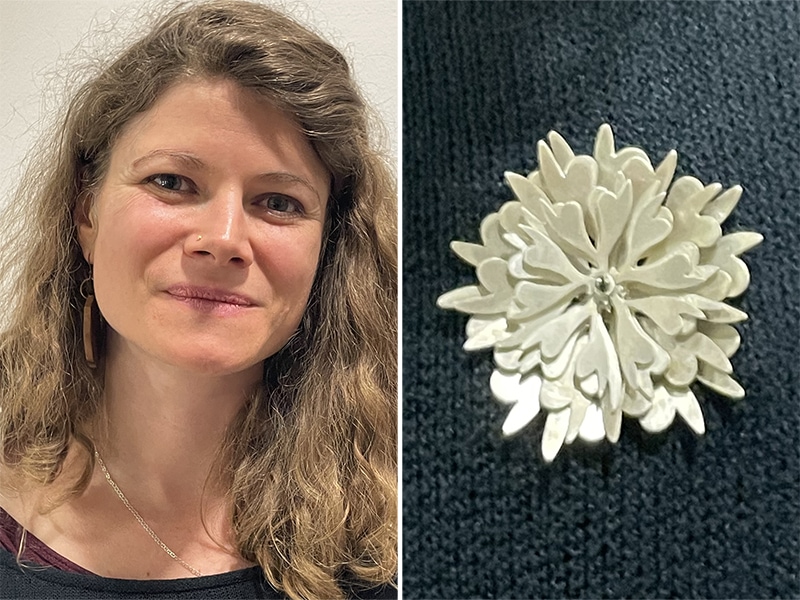
Jana Westreicher: For the inspiration
Jana Westreicher made the silver brooch she wears. This is the first time the student has attended Munich. She’s here to gain inspiration. “It’s so nice to see all the different styles and all the creativity,” she says. “It’s just wonderful!”
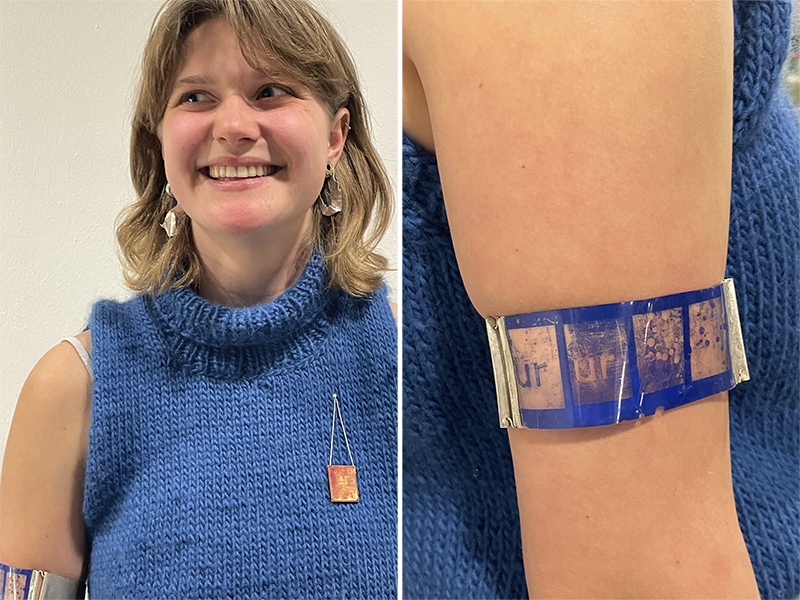
Lisa Muriel Huber: To see all the possibilities
Lisa Muriel Huber’s blue armband of printed plastic film immediately drew my attention. She is studying in Graz and has loved being here and seeing what’s possible—“All the different approaches and just seeing that you can basically do whatever if you put enough effort and energy behind it,” she says.
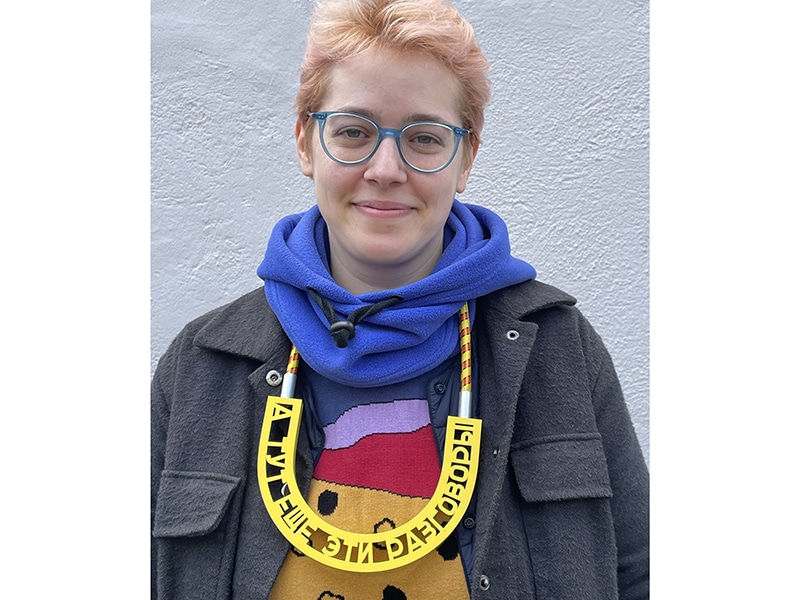
Katia Rabey: To check whether the pandemic derailed the event
Katia Rabey came to Munich twice before the pandemic, but this is her first time back since then. She wanted some kind of proof that this world still exists because she had been cut off from it for a long time. So—does it still exist? “It does!” exclaims Rabey, “and overwhelmingly so! I love it so much!” She finds everything about the event beautiful and interesting and “you see a lot of like-minded people who are so sparsely spread all over the world. Otherwise you can hardly feel them exist outside of their Instagram feed, and it’s very, very precious.” Rabey has written several times for AJF.
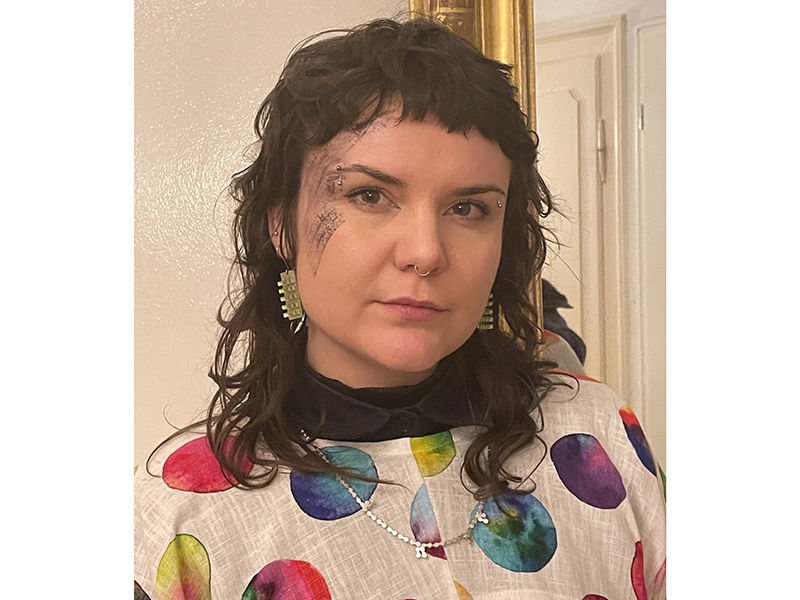
Emma Stone: To fulfill a dream
I meet Emma Stone at an event Ludwig Menzil has organized in his hotel room. A black claw-foot tub in one corner if the packed room has carved wooden spoons hanging from its edge. Under a ceiling with plaster putti in each corner and a magnificent chandelier, people take turns fashioning things from black wax at a tool-strewn table. Menzil then attaches them to one of two black forms, loosely hour-glass shaped and about 18 inches tall and 8 inches around at the widest point. It’s as much a party as a happening, and although I came expecting to fabricate jewelry in the method of exquisite corpses, it’s never made clear what Menzil plans to do with the component-encrusted forms. Cast them? Maybe in plastic?
Stone was studying jewelry at Massachusetts College of Art and Design when COVID ran her schooling off track. Since then she has traveled in Europe a few times, making jeweler friends and working in their studios. She’s currently tending bar in Boston and has a small studio in her apartment. She has dreamed of coming to Munich since 2019.
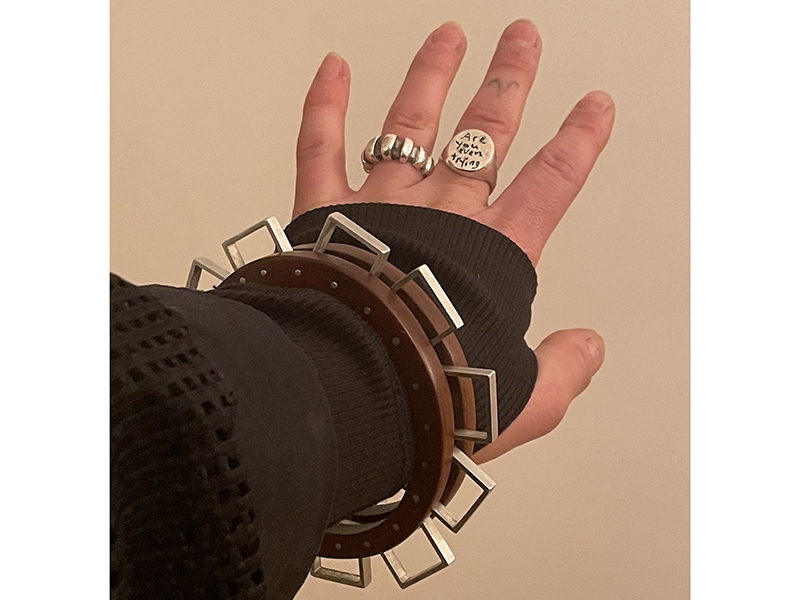
Stone loves fashion, she loves jewelry. “It’s a connecting force,” she says, “basically the best way that one can articulate themselves and express individuality, because it serves no functionality most of the time.” She has studied the works of jewelers from Germany and surrounding countries: Otto Künzli, Karl Fritsch, Gerd Rothmann, and so many others. She met Künzli the other day and saw Fritsch’s work and Rothmann’s, too. “They’re big inspirations of mine.” To be in a community that shares her values of expression and craft—”that’s just the best thing I could ever hope for.” Now that she’s here, Stone hopes to present her work someplace at the event next year.
We welcome your comments on our publishing, and will publish letters that engage with our articles in a thoughtful and polite manner. Please submit letters to the editor electronically; do so here.
© 2024 Art Jewelry Forum. All rights reserved. Content may not be reproduced in whole or in part without permission. For reprint permission, contact info (at) artjewelryforum (dot) org
[ad_2]









